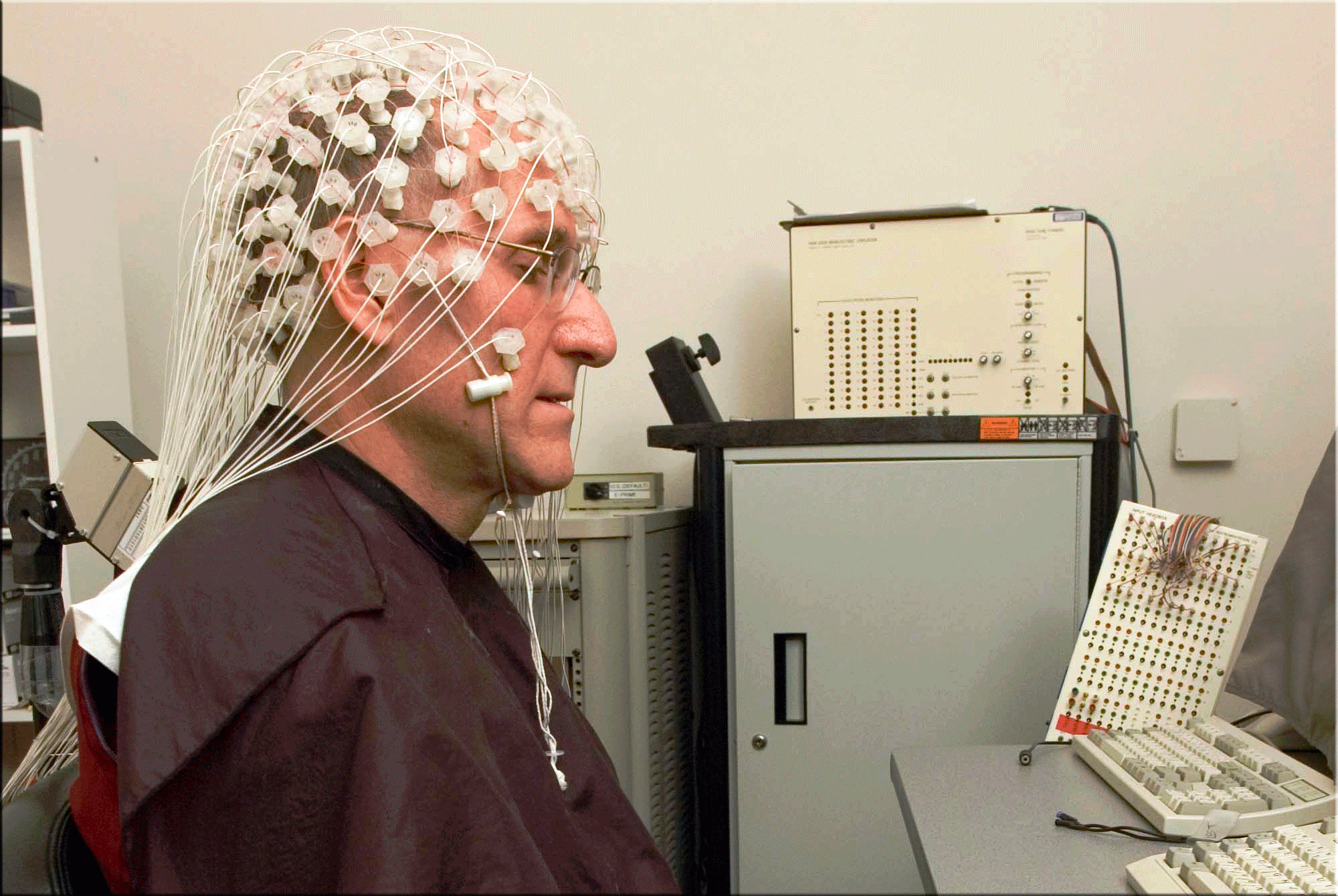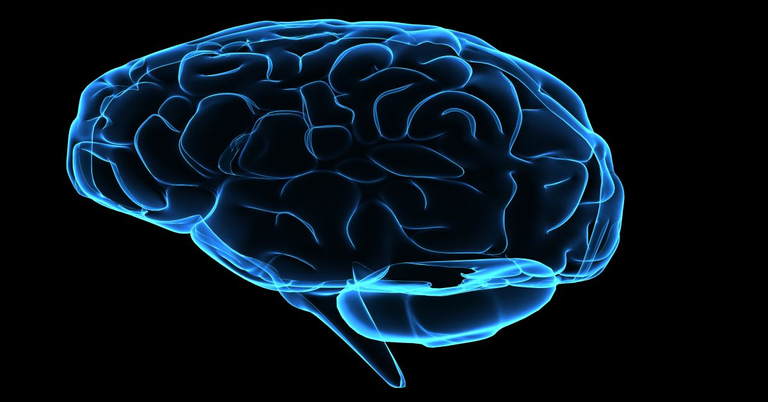
The sage Patañjali in 200 B.C. described the experiences of deep meditational trance in terms of Sāṁkhya-Metaphysics¹ and collective observations that have been emerging from at least several centuries of rich yoga traditions on Indian ground. Through his Yoga Sūtras he provided a detailed and scientific analysis of reactive patterns of psychological and spiritual events on the experiential level of the yoga practice. Today, we can read these writings in relation to what scientific researches have recently discovered. In this article, we will address one research in particular.
The neuroscientific research conducted by Dr. Andrew Newberg offers an enlightening fresh perspective to stimulate especially some western mindsets. Newberg holds the Chair of Radiology at the Institute of Nuclear Medicine, is the leading director of the Institute of Neuro-PET-Research and teaches Religious Studies at the University of Pennsylvania.
His research revealed astonishing brain mechanisms that practitioners of meditation and other spiritual disciplines of the mystical traditions share around the world. According to Newbergs’ findings all those techniques are just an expression of one distinctive brain mechanism that can trigger mystical states. These mystical states can occur in various degrees of intensity due to various forms of spiritual practices. Here are some examples the researcher points out (Newberg 2003: 161 pp.):
The soft feeling of connectedness to mother nature during a walk in the woods.
The feeling of being connected to the people and life while attending singingcircles.
The ecstasy and hyper lucid visions among tribal trance dancing.
The deep meditative absorptions practitioners of Yoga, Buddhism, Sufism, Hermetism experience etc.
The level of the spiritual experience is determined by how much the neurological activity of the orientationarea of the brain is blocked. The orientationarea of the brain is divided in the left and the right section. Amongst other functions, the left side is for creating the feeling and sense for our body in 3D-space in relationship to the outside world. The right side, on the other hand, creates the sense for a stable 3D world in space and time. For example, if the left orientation area is damaged the patients are not able to estimate distances, coordinate the movements of hands and legs and in very serious cases completely loose the ability to have a sense where they are.

In summary, the stronger the blockage of the stimuli to this area in the brain, the deeper the mystical experience. Newberg identified two main meditation techniques that represent two different approaches to the practice of mindcontrol techniques that enable deep mystical experiences. The researcher calls it the active and the passive method (Newberg 2003:163). The passive is based on mindfulness and pure observatory activity: the act of emptying the mind of thoughts. The active method, on the other hand, uses the act of intense concentration on certain mental or physical objects for a prolonged period of time. The active method is exactly the method that Patañjali described in the first chapter of his Yogasutras (I.17 and I.18pp). The comparison of Patañjali's explanations with Newbergs identified brain mechanisms can really boost our understanding of Yoga meditation to a new level.
Let’s dive into the Sūtras and relate them to Newberg’s research step by step!
YS 1.17 vitarka-vicārānandāsmitā-rūpānugamāt samprajñātaḥ
Translation: The samādhi that still uses the mind as a support (samprajñāta samādhi) consists of the consecutive mental stages of absorption with: gross awareness (vitarka), subtle awareness (vicara), bliss (ānanda) and the sense of I (asmitā) (See Bryant 2005:61).
The Beginning of Concentration, the Vitarka Stage (dharaṇa)
Patañjali’s Perspective: Firstly, the meditator chooses an object to focus on. Any object chosen for any mind is basically a mental image, a mental fluctuation that is called vṛtti in Sanskrit. The technique requests the practitioner to concentrate without stopping and to resist every attraction to any other mental states, thoughts (also called vṛittis). If this level of concentration is manageable over a prolonged period of time the practitioner advances
to the next stage called vitarka (absortion with gross awareness).
What does Newberg say about this stage?
According to the researcher every act of mystical experience starts with an act of volition. That means the attention is directed towards a gross physical object, which is to be concentrated upon uninterruptedly.
In the subjective perspective of the practitioner the compact (gross matter) begins to dissolve slowly into its subtle components. The subtler realms of its sound, form and fluctuating energy vibrations are, thus, experienced. For example, the practitioner slowly starts to transcend the gross aspects of his or her breath, or the inner visualization of a maṇḍala, or the muttering of a mantra. If the concentration is upheld, the subtler aspects of the chosen object begin to be experienced.
But what is happening neurologically?
This phase is the result of the neuronal flow that is activated through uninterrupted concentration. This flow activates the attention area of the brain, which is located behind the forehead. This area is responsible for fixing the object in the mind framework. When the practitioner is able to steadily uphold his focus on a chosen object, it creates a neuronal discharge that goes from the limbic system of the brain to the hypothalamus. It is important to remark that the hypothalamus is the organ of the brain that amongst others regulates the vegetative nervous system and controls the function of tranquilization or excitement. This flow leads to an increase of excitement and at the same time the neuroactivity in the right orientation area decreases. When this stage is eventually mastered the practitioner enters the next stage which Patañjali terms vicāra. Patañjali points out this moment as the beginning of meditation (dhyāna).
Entering Meditation, the Vicāra Stage (dhyāna)
Patañjali’s Perspective: This stage is called vicāra, the absorption with subtle awareness. Vicāra can be understood as reflection, examination and investigation. The meditator is now being slowly absorbed into the awareness of the subtler qualities of the object (its vibrations, shininess, the fluctuating potentials of energy, etc). In summary, the meditator leaves the gross plane of human experience and steps into a subtler one.
How does that happen neurologically?
At the neuroscientific level the activity of the right orientation area of the brain has already significantly decreased. Remember, the right orientation area is responsible for creating the feeling of 3-dimensional space and time around us. Once its activity is decreased to this level, this area has no choice but to create the very foundations of space from the object meditated upon. In other words, the subjective feeling of being one with the chosen object of meditation arises.
Intense Meditation, Ānanda Stage
Patañjali's Perspective: If the previous stage can be continued uninterruptedly, the meditator enters the stage that is named ānanda, the stage of absorption in bliss. According to the commentators of the Yogasūtra, the mind (citta in Sanskrit) starts to have conscious perception of the mechanism of awareness itself. In other words: the mind itself is turned into the object of meditation at this stage. At this point, we need to divert into a couple of concepts to understand this stage better:
The Reality
The reality, according to the Yogasūtra’s metaphysics is entirely pervaded by mind stuff. In other words, if the gross and subtle aspects of the object were transcended (as it happens in the first stages described before) the practitioner starts to become aware of the mind stuff itself since it is the subtler and more sublime layer of reality.
Pure Consciousness, ātman
If the mind becomes an object, the one who perceives is understood as being different from the mind itself. The ultimate layer of awareness according to this metaphysics is known as the pure consciousness (the ātman), the ultimate perceiver. At this stage, the pure consciousness which has always been channeled by the mind turns inward to concentrate upon the very object which makes concentration possible: the psycho-physical structure.
Guṇas, qualities of matter
The mind in Patañjali’s Yoga metaphysics is considered matter as well. As any matter in this metaphysics is constituted by 3 qualities (guṇas) in different quantities so is the mind. The mind (citta) has an immense quantity of sattva material quality. Sattva is linked to the perfect balance in material level. If the mind is sattvic, and the pure consciousness turns his focus to the subtle mind stuff pervading reality, the yogic experience will also carry a sattvic constituition. Thus, the experience is recognized as bliss (for basic information about sattva and the guṇa-theorie, see https://en.wikipedia.org/wiki/Guna or Bryant 2005: xlviilviii).
How does the mind become itself the object of meditation?
Newberg explains that the deeper the contemplation proceeds, the more intense the discharge of the stimuli that streams from the orientation area over the attention area where the hypothalamus is. This eventually leads to a stage where the function of excitement, that is controlled by the hypothalamus, reaches its maximum. At this moment a neuronal firework comes into play: a neuronal overflow triggers the function of tranquilization at its maximum level possible simultaneously. The activation of the functions of excitement and tranquilization of the nervous systems (the sympathetic and parasympathetic) activates a flooding of maximum stimulation that flows across the limbic system in both structures of the orientation areas of the brain. The practitioner, subjectively and neuroscientifically, has just left the 3-dimensional world and dwells in a state of maximum calmness and excitement at the same time... Even though time itself is not noticed by the brain anymore.
However, the commentators of Patanjali’s scripture warn us that this is not the final state of yoga... Though they also explain that a vision of god is already possible at this stage.
Meditative Absorption, Asmitā stage (Samādhi)
Patañjali’s Perspective: This stage is the beginning of proper samādhi. By being able to continue the meditative absorption, the meditator naturally penetrates the subtlest structures of his mind stuff (citta). Slowly the next level is accessed. The aspect of manas is left behind. In other words, the instrument responsible for knowing, thinking, categorizing and placing the information received by the five senses is left behind.
In this stage, the meditator has surpassed the gross and subtle aspects of the chosen object of meditation. He has experienced oneness with the object to then become aware of the mechanism of awareness itself. He has turned the mind into the object of the meditation itself and has experienced bliss. Now, the meditator advances to the very instant within himself that is the experiencer of this bliss, whish is called ahaṃkāra (lit. the maker of I) and buddhi (intelligence, organ of discrimination). In here, the practitioner has arrived at the most subtle layers of his psychophysical structure in the material level of his being and is not yet at the ultimate perceiver, his immaterial and eternal essence or self. He is very close to his real essence, which is pure consciousness (puruṣa) and beyond mater. He experiences the feeling of pure I-am-ness.
This stage still has a material support, which means that the mindstuff (citta) is still a little bit active. That happens due to the fact that the consciousness still uses functions of the material brain to channel awareness. As a result, this meditative condition is termed samprajñāta samādhi, which can be understood as meditative absorption with physical cognition (or support).

...And neurologically, what’s going on?
This state corresponds to the stage that precedes the final stage of Newbergs’ active method. At first, there’s a complete restraint of the right orientation area of the brain, which creates space and time. Thus, in the experience of the meditator time and space have disappeared. There is, however, still little activity in the left orientation area, which creates the feeling of self and body in 3D-space. As a consequence, the only thing that is left now for the meditator to observe, to concentrate upon is his sense of pure I-ness.
The Final stage
YS 1.18 virāma-pratyayābhyāsa-pūrvaḥ saṃskāra-ṣeso 'nyaḥ
Translation: The other [the samādhi without physical cognition] is preceded by the determination to extinguish all mental activity. In this state only the latent impressions remain.
Patañjali’s Perspective: The last and final layer of the mind stuff encapsules the pure consciousness, the ātman. Reaching this layer brings highly sattvic state which is described as a feeling of bliss, clarity and purity. The layer is termed buddhi, the pure intelligence, the intellect, the seat
of will and discrimination.
In this state, the Ego (the ahaṁkāra) has already been left behind which means the individuation has completely disappeared. The experience of the meditator has left the plane of his or her individual body. In other words, the meditator literally experiences being everywhere simultaneously. The final stage itself is actually beyond thoughts and words since in this stage literally all mental activity stops. It is thus called asaṁprajñāta-samādhi.
The pure consciousness, ātman, inner seer or puruṣa is now devoid of an object to perceive. All the psychophysical structure has been left behind. For the first time, the very power of consciousness itself can become aware of itself instead of watching the outside world through the lenses of the mind. In summary, the pure consciousness that is shared by all beings can either be a subject or an object. If there is no object left, it has no choice but to become selfaware. Patañjali explains also that there is a last mental fluctuation, a last vṛtti, before the mind stuff (citta) reaches complete inactivity. He also points out that the last cognitive act before the ultimate stage (asaṁprajñāta samādhi) is the sense that all mental activity is now completely erased. He terms this last mind activity virāma pratyaya: the thought of extinction.
What does science say?
This final stage corresponds again perfectly to the final state in Newberg’s model of all mystical experiences. Everything from gross to subtle has been transcended. Space and time have disappeared to the meditator, since the right orientation area shows no leftover activity. Newberg describes that there is a last single moment when the concentration stops for a moment. In this moment the activity of the left orientation area of the brain also becomes completely silent. Suddenly, all mental activity is wandering to the prefrontal cortex, the attention area of the brain, located behind the forehead. The sympathetic and parasympathetic nervous systems both are working in their maximum activity now.
Because of this the meditator is fully focused, deeply concentrated and attentive and while also being totally calm, excited and very blissful! The body, the thinking mind, the brainfaculty that creates the individuation (or egofaculty) has become silent. We can easily connect this last experience with Patanjali’s perspective! The body of the practitioner is no longer binding him: he is everywhere, completely merged with the absoluteness of the universe. Now his essential core of being, his soul, his pure consciousness has finally reached the ultimate state, which is called yoga. Yoga, the unity with the ultimate reality, the living universe.
¹The term Sāṁkhya signifies the oldest and most influential philosophical System of ancient India, originating according to the recent indological opinions around 850-600 B.C. Its classical formulation is found in Īśvarakṛṣṇa’s Sāṅkhya-Kārikā (ca. 350 C.E.), a condensed account in seventy-two verses. It is the theoretical und metaphysical foundation of Yoga thought, which consequently puts the Sāṁkhya insights into practice. Sāṁkhya literally means “enumerating”, since its philosophical method is based on enumerating the very constituents of our shared reality. The goal is to eradicate suffering by achieving a proper discrimination between matter (prakṛti) and consciousness (puruṣa). For more information: http://www.iep.utm.edu/sankhya/responsible
The author: © Nils Jacob Liersch (almost M.A. Religious Studies and Classical Indology,
Yogateacher, Musician, Eco-Activist @ Linaria e.V. and ecobasa e.V.); Email: [email protected]; Web: http://www.patanjala-yoga.org
Bibliography:
Bryant Edwin F. (2005). The Yoga Sutras Of Patañjali – A New Edition, Translation, and
Commentary. New York: North Point Press.
Newberg Andrew, D'Aquili Eugene G., Rause Vince (2002). Why God Won't Go Away:
Brain Science and the Biology of Belief. New York: Ballantine Books.
The Internet Encyclopedia of Philosophy (IEP).Ruzsa Ferenc (2001). Sankhya. http://www.iep.utm.edu/sankhya/.
Congratulations @enjotel! You have completed some achievement on Steemit and have been rewarded with new badge(s) :
Click on any badge to view your own Board of Honnor on SteemitBoard.
For more information about SteemitBoard, click here
If you no longer want to receive notifications, reply to this comment with the word
STOPBy upvoting this notification, you can help all Steemit users. Learn how here!
I know brahman/nirvana. My english isn't very good, but I want to write about it and to share what I went through in a very detail way. I can give out the exact correct information what oneness with the divine light is. Everyone will know how to reach it by hearing my simplified explanation. It will be easy to understand but it takes huge effort for the listeners to execute it and they will know why. But nothing is impossible every one can do it. If I could then everyone else can. We are all built in the same way and we will experience exactly same experience at the end, not 99% but 100%. If I only had someone who could help me with the english grammar and construct nice sentences.